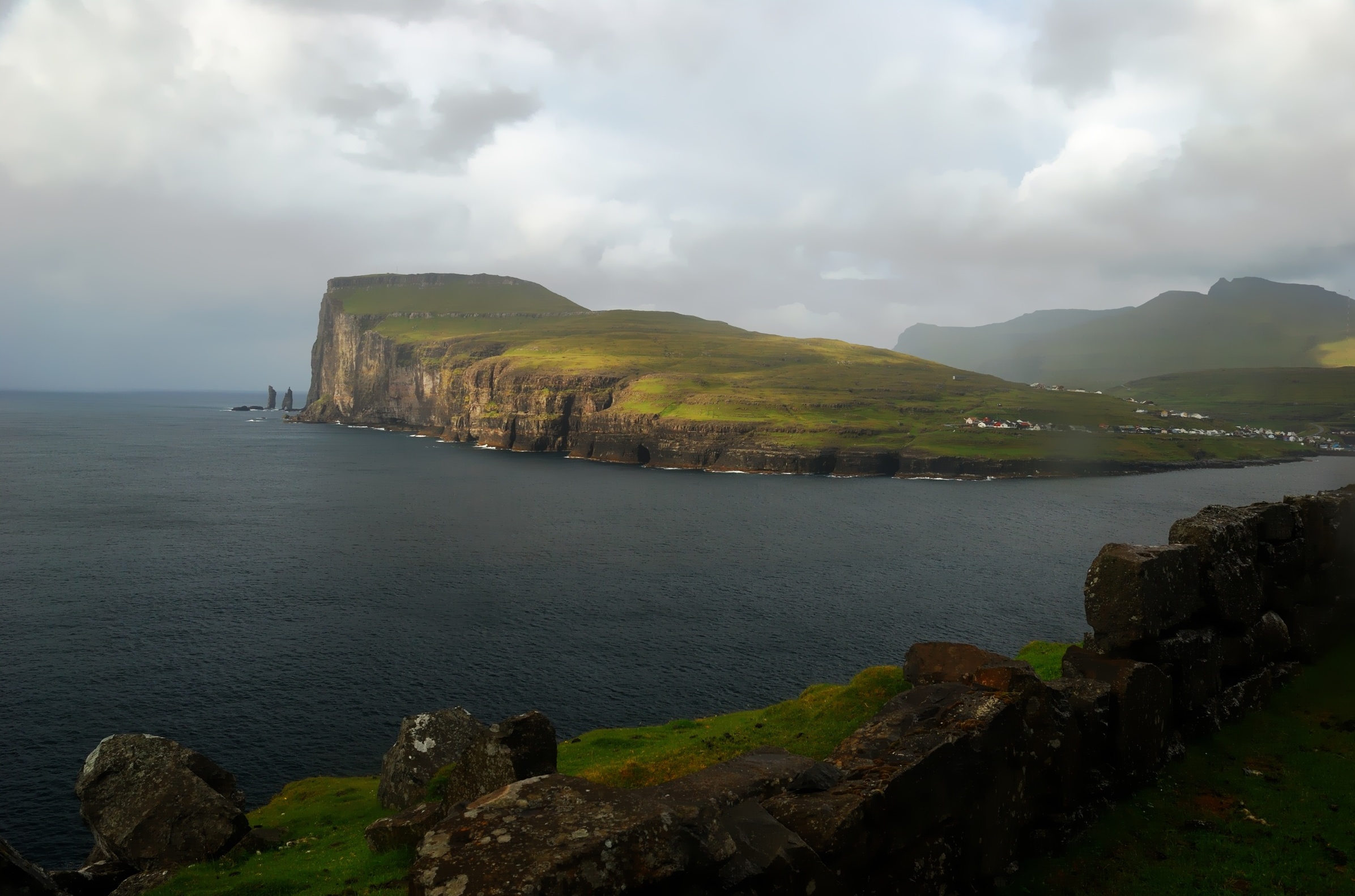
Eiðiskollur Radarstation
Written by Mr. Óli Wolles
From Eiðiskollur is a great view. NB Be careful, as the cliff is right down to sea. Be aware of the gorges, on both sides of Eiðiskollur! Keep children at hand!
During World war 2 Faroe Islands were occupied by Britain on April 12th, 1940. During the war, many British soldiers were in the Faroe Islands. At its most, they were around 8000, of these 5000 resided in Vágar, as they built their airport there.
When building an airport in 1942, it also became very important to control the traffic at sea and in the air. Hence, they planned to build several radar stations around the Islands: one in southern end of Nólsoy, one in southern end of Suðuroy, one in Mykines, one in Sandoy, two in Vágoy near the airport, one in Tórshavn and one in Eiðiskollur. The construction at Eiðiskollur started in spring 1942 and the station was finished December 2nd, 1942.
The mountain Eiðiskollur is 352 meter high, so it was hard work to bring the construction material to the top of the mountain. Building a road was discussed, but instead every adult man in Eiði got a job carrying sand and cement for the concrete every day in the summer and autumn of 1942. The sand was dug up and filled in sacks at the shore south of the village Ljósá. They then transported it with boats to Eiði and carried it to the top of the mountain Eiðiskollur. Around 100 men had their daily job carrying construction material for the radar station during summer and autumn 1942, paid per hour. Each man made four or five trips each day. The hardest job was to transport the two engines for the electric support to the mountain top. The engine was put on a sledge and pulled to the mountain top by hand.
On top of the mountain Eiðiskollur there were built three houses. One was for guard keeping and communication. From here they kept an eye with the ocean north of the Faroe Islands. One house was for the engines and one house was for the personnel. At the northernmost top there was a watchtower too. From here there was a very good view towards vest, north and east.
Dec. 2nd, 1942 the construction of the radar station was finished. Afterwards two men had their daily job carrying food, coal, oil and other supplies for the station.





